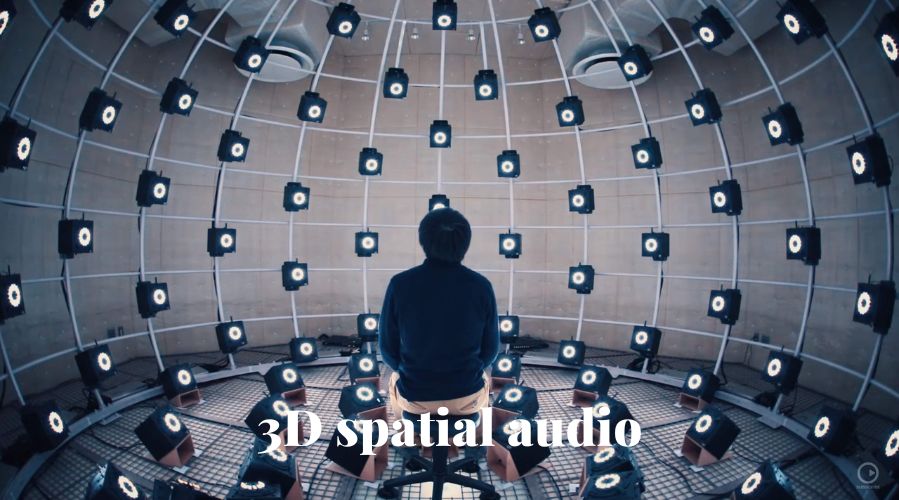As a developer, I’m excited to discuss the development and applications of AR and VR technologies in various industries, including gaming, AI, and general technology. These immersive technologies have transformed the way we interact with digital content and opened up new possibilities for entertainment, education, training, and more.
AR Tech
The technology known as augmented reality (AR) improves our perception of the environment by superimposing digital content on the physical world. Typically, a camera and a display device, like a smartphone or a pair of smart glasses, are used. AR can provide users with information, graphics, or virtual objects that appear as if they exist in the real world. One of the best-known examples of AR is the mobile game Pokémon Go, which introduced millions of people to the concept of combining digital elements with the real world.
VR Tech
Virtual Reality (VR), on the other hand, immerses users in a completely simulated environment, often through the use of a head-mounted display (HMD) and other input devices. By wearing the VR headset, users can be transported to virtual worlds and interact with the environment in a more immersive way. VR has been extensively used in gaming, providing players with an unparalleled level of immersion and presence within the game world.
History of AR and VR Technologies
The concept of AR dates back to the 1960s, with the development of “The Sword of Damocles,” considered one of the earliest VR/AR head-mounted display systems. However, it wasn’t until the last decade that AR and VR technologies gained significant traction due to advancements in hardware and software capabilities. The release of devices like the Oculus Rift, HTC Vive, and Microsoft HoloLens, among others, brought these technologies into the mainstream.
Impact of AR and VR Technologies
In the gaming industry, AR and VR have had a profound impact. VR has revolutionized the way we experience games by providing a more immersive and realistic environment. Games developed for VR often incorporate 3D spatial audio, hand tracking, and motion controllers to enhance the user’s sense of presence and interactivity. On the other hand, AR has expanded gaming experiences beyond the confines of traditional screens, allowing players to engage with virtual objects in their real-world surroundings.
Application Areas for AR and VR Technologies
AR and VR technologies have also found applications beyond gaming. In the field of AI, VR is used to create virtual training environments for machine learning algorithms, allowing them to learn and make decisions in a simulated world. AR is utilized in industrial settings, providing workers with real-time information and guidance during complex tasks. In the general tech industry, both AR and VR have been used for immersive storytelling, virtual tourism, architectural visualization, medical training, and more.

Development Methodologies
When it comes to creating virtual game environments, developers employ various development methodologies. One common approach is iterative development, where the game is built incrementally, allowing for frequent testing and feedback from users. This iterative process helps refine the gameplay mechanics, visual aesthetics, and overall experience of the virtual environment. Prototyping is also an essential part of the development process, allowing developers to quickly explore ideas and test different mechanics before committing to full-scale development.
Furthermore, user testing plays a vital role in the development of virtual game environments. Developers conduct playtests to gather feedback and observe how users interact with the environment. This feedback helps identify areas for improvement, fine-tune gameplay mechanics, and ensure a more enjoyable and engaging experience for players.
In recent years, advancements in game engines like Unity and Unreal Engine have made it easier for developers to create and test virtual game environments. These engines provide robust tools and frameworks for building immersive experiences, including support for VR and AR platforms.

Prominent Brands
There are several prominent brands that manufacture VR technology and have contributed to the growth and development of the industry. Here are some well-known brands in the VR space:
Oculus: Oculus, a subsidiary of Facebook, is a leading brand in the VR industry. They have released several VR headsets, including the Oculus Rift, Oculus Quest, and Oculus Go. These headsets offer high-quality VR experiences and have a strong library of games and applications.
HTC Vive: The HTC Vive, developed by HTC and Valve Corporation, is another popular VR headset. It offers room-scale tracking, allowing users to move freely in a designated play area. The Vive Pro and Vive Cosmos are notable additions to the Vive lineup.
Sony PlayStation VR: Sony’s PlayStation VR is designed specifically for use with the PlayStation 4 and PlayStation 5 gaming consoles. It provides an accessible and affordable VR experience for console gamers, with a growing library of VR games.
Valve Index: The Valve Index is a high-end VR headset developed by Valve Corporation. It offers impressive visuals, precise tracking, and a wide field of view. The Index is often favored by enthusiasts and VR developers due to its advanced features.
Microsoft HoloLens: While not strictly a VR headset, the Microsoft HoloLens is a leading brand in the augmented reality (AR) space. It provides a mixed reality experience by overlaying digital content onto the real world. The HoloLens is particularly popular in industries like industrial design, architecture, and education.
Exciting gadgets for home gaming
When it comes to exciting gadgets for home gaming, there are some noteworthy options:
PlayStation VR: As mentioned earlier, the PlayStation VR headset is a popular choice for console gamers. It offers an immersive gaming experience and is compatible with a wide range of PlayStation games.
Oculus Quest 2: The Oculus Quest 2 is a standalone VR headset that offers wireless gameplay and doesn’t require a PC or console. It’s known for its ease of use, affordability, and growing library of games and experiences.
Valve Index: For gamers seeking a high-end VR experience, the Valve Index is a top-tier option. With its advanced features, including precise tracking and high-quality visuals, it delivers a premium gaming experience.
Razer Hydra: The Razer Hydra is a motion controller system that enables more immersive gameplay by allowing users to interact with the virtual environment using their hands. It has been used with various VR setups and provides enhanced input capabilities.
HTC Vive Tracker: The HTC Vive Tracker is a device that allows users to track physical objects and integrate them into the virtual environment. This opens up possibilities for more interactive and immersive gaming experiences.
Final Thoughts
Overall, AR and VR technologies have revolutionized industries like gaming, AI, and general tech, offering new ways to interact with digital content and pushing the boundaries of human-computer interaction. The development and application of these technologies continue to evolve, and we can expect even more exciting advancements and use cases in the future.




